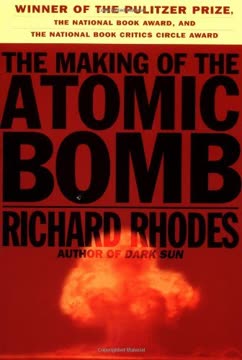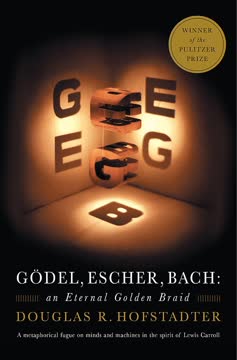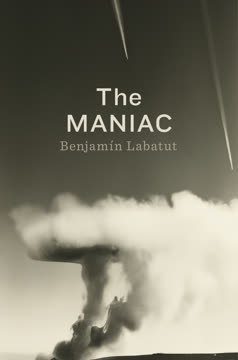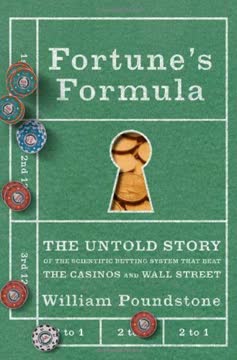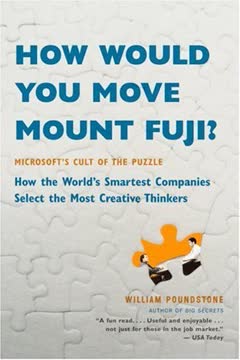Key Takeaways
1. Dilemmas Expose the Clash Between Individual and Collective Interests
The dilemmas of real life are created not by mad scientists but by the sundry ways that our individual interests clash with those of others and of society.
Ubiquitous conflicts. Dilemmas are not just abstract thought experiments but are reflections of the everyday tensions between personal desires and the well-being of the larger community. These conflicts arise in various contexts, from personal relationships to international relations, highlighting the fundamental challenge of balancing self-interest with the common good.
Ethical considerations. Dilemmas force us to confront difficult ethical questions, such as whether there is always a rational course of action and how to prioritize competing values. They challenge the notion that individual rationality always leads to the best outcome for society, revealing the potential for collective harm when everyone acts in their own self-interest.
The nuclear age. The advent of nuclear weapons brought these issues to the forefront, as the potential for swift and devastating destruction amplified the stakes of international conflict. The question of whether to prioritize national security at the expense of global well-being became a central concern, underscoring the urgency of finding ways to promote cooperation in a world of competing interests.
2. Game Theory Analyzes Conflict Through Rationality and Deception
Game theory is a study of conflict between thoughtful and potentially deceitful opponents.
Beyond recreational games. Game theory is not merely about parlor games but a rigorous mathematical framework for analyzing strategic interactions. It explores how individuals make choices when the outcome depends on the choices of others, assuming that all players are rational and seek to maximize their own payoffs.
Rationality and strategy. The core of game theory lies in the concept of "strategy," which is a complete plan of action that specifies what a player will do in every possible situation. Game theory assumes that players are perfectly rational, meaning they have complete information, can accurately assess the consequences of their actions, and always choose the option that yields the best outcome for themselves.
Applications in diverse fields. Game theory has applications far beyond recreational games, extending to economics, politics, biology, and even military strategy. It provides a framework for understanding a wide range of conflict situations, from bidding at an auction to negotiating an arms control treaty.
3. The Minimax Theorem Offers a Rational Approach to Zero-Sum Games
Von Neumann demonstrated mathematically that there is always a rational course of action for games of two players, provided their interests are completely opposed.
Total war. The minimax theorem applies to "zero-sum games," where one player's gain is necessarily another's loss. In these situations, the theorem provides a rational strategy for each player, ensuring that they minimize their potential losses while maximizing their potential gains.
Maximin and minimax. The minimax principle involves each player choosing the strategy that maximizes their minimum possible payoff (maximin) or minimizes the maximum possible payoff for the opponent (minimax). This approach leads to a "saddle point," where neither player can improve their outcome by unilaterally changing their strategy.
Cake division. A simple example of the minimax principle is the cake division problem, where two children must divide a cake fairly. By having one child cut the cake and the other choose their piece, both children are incentivized to act rationally, ensuring a fair division.
4. The Prisoner's Dilemma Highlights the Paradox of Cooperation
By the sort of synchronicity that is less mysterious than it seems, the prisoner’s dilemma was “discovered” in 1950, just as nuclear proliferation and arms races became serious concerns.
Challenging rationality. The prisoner's dilemma is a game that challenges the traditional notion of rationality, demonstrating that individual self-interest can lead to a suboptimal outcome for all players involved. It presents a situation where cooperation would yield the best collective result, but the incentive to defect undermines the possibility of achieving it.
The dilemma tale. The prisoner's dilemma is often presented as a story, such as the tale of two prisoners who must decide whether to cooperate with each other or betray the other to the authorities. Regardless of the other prisoner's choice, each prisoner is better off betraying, leading to a situation where both betray and receive a worse outcome than if they had both cooperated.
Real-world implications. The prisoner's dilemma has broad implications for understanding social dilemmas, such as arms races, environmental pollution, and public goods provision. It highlights the difficulty of achieving cooperation in situations where individuals have a strong incentive to act in their own self-interest, even if it harms the collective good.
5. Von Neumann's Vision Shaped the Nuclear Age and Computer Science
Perhaps no one exemplifies the agonizing dilemma of the bomb better than John von Neumann (1903–1957).
A polymath's legacy. John von Neumann was a brilliant mathematician and physicist who made significant contributions to various fields, including game theory, computer science, and nuclear weapons development. His work on the Manhattan Project and the development of the electronic digital computer had a profound impact on the 20th century.
Applied mathematics. Von Neumann had a passion for applied mathematics, seeking to use his theoretical knowledge to solve real-world problems. His work on both the computer and the bomb exemplifies his interest in the applications of mathematics to diverse spheres.
The computer pioneer. Von Neumann's contributions to computer science were instrumental in shaping the development of modern computers. He advocated for the stored-program architecture, which allows computers to store both data and instructions in memory, making them more flexible and efficient.
6. RAND Corporation: Thinking About the Unthinkable
RAND thought highly enough of game theory to hire von Neumann as a consultant and to devote a great deal of effort not only to military applications of game theory but also to basic research in the field.
A think tank's origins. The RAND Corporation was founded shortly after World War II to perform strategic studies on intercontinental nuclear war. It hired many of the scientists leaving wartime defense work and took on as consultants an even larger orbit of stellar thinkers.
Game theory's role. RAND embraced game theory as a tool for analyzing strategic interactions and developing military strategies. The corporation hired von Neumann as a consultant and devoted significant effort to both military applications of game theory and basic research in the field.
Influence on defense policy. RAND's work on game theory and nuclear strategy had a significant impact on U.S. defense policy during the Cold War. The corporation's analysts developed concepts such as "mutually assured destruction" and "second-strike capability," which shaped the strategic thinking of policymakers.
7. Preventive War: A Cold War Aberration Rooted in Fear
By 1950, a number of people in the United States and Western Europe had decided that the United States should contemplate an immediate, unprovoked nuclear attack on the Soviet Union.
The nuclear dilemma. The Soviet Union's development of the atomic bomb in 1949 ended the U.S. nuclear monopoly and sparked a nuclear arms race. This led some to advocate for a "preventive war," arguing that the United States should launch a preemptive nuclear attack on the Soviet Union to prevent it from becoming a nuclear power.
Bertrand Russell and John von Neumann. Surprisingly, the idea of preventive war found support among some of the most brilliant minds of the time, including Bertrand Russell and John von Neumann. They believed that preventive war was the only rational solution to the deadly dilemma of nuclear proliferation.
Aggressors for peace. The idea of preventive war was controversial and ultimately rejected by policymakers. However, it reflects the anxieties and fears of the early nuclear era, when the world grappled with the implications of nuclear weapons and the potential for global destruction.
8. Nash Equilibrium: A Stable State That May Not Be Optimal
Nash demonstrated that every finite game has at least one equilibrium point.
Beyond zero-sum. John Nash extended game theory by studying "noncooperative" games, where coalitions are forbidden. He focused on non-zero-sum games and games with three or more players, where the interests of the players are not completely opposed.
No regrets. Nash's key concept is the "equilibrium point," which is an outcome where no player can improve their payoff by unilaterally changing their strategy, given the strategies of the other players. This means that each player has no regrets about their choice, given what the others have done.
Suboptimal outcomes. While Nash equilibrium provides a stable solution, it does not necessarily lead to the best outcome for all players. In some cases, the equilibrium point can be Pareto-inefficient, meaning that there is another outcome that would make at least one player better off without making any other player worse off.
9. TIT FOR TAT: A Simple Strategy for Long-Term Cooperation
In the last years of his life, von Neumann saw the realities of war becoming more like a fictional dilemma or the abstract games of his theory.
Axelrod's tournaments. Robert Axelrod's computer tournaments demonstrated the effectiveness of the TIT FOR TAT strategy in iterated prisoner's dilemma games. TIT FOR TAT is a simple strategy that starts by cooperating and then does whatever the other player did on the previous round.
Nice, provocable, forgiving. TIT FOR TAT's success stems from its being nice (never the first to defect), provocable (retaliates against defection), and forgiving (returns to cooperation after defection). These qualities make it a robust strategy that can thrive in a variety of environments.
Evolutionary stability. Axelrod's experiments also showed that TIT FOR TAT is an evolutionarily stable strategy, meaning that it can resist invasion by other strategies. This suggests that cooperation can emerge and persist in a population of self-interested individuals, even without central authority or altruistic motives.
10. The Dollar Auction: A Cautionary Tale of Escalation
The dollar auction is apt to turn up anywhere a conflict of interests exists—and the conflict need not be between sentient beings.
Irrational escalation. The dollar auction is a game in which players bid for a dollar, but the highest bidder must pay their bid, even if they don't win the auction. This often leads to irrational escalation, as players become trapped in a cycle of bidding to avoid losing their previous bids.
Sunk costs. The dollar auction illustrates the "sunk cost fallacy," where individuals continue to invest in a losing proposition because they have already invested so much. This can lead to disastrous outcomes, as players become more concerned with recouping their losses than with making rational decisions.
Real-world analogies. The dollar auction has analogies in various real-world situations, such as bidding wars, arms races, and even failed relationships. It serves as a cautionary tale about the dangers of escalation and the importance of cutting losses before they become too great.
11. Social Dilemmas in Nature: Cooperation and Competition in Biology
Theorists now realize that prisoner’s dilemmas occur in biology, psychology, sociology, economics, and law.
Evolutionary game theory. Game theory has found increasing applications in biology, providing insights into the evolution of cooperation and competition among animals. By framing interactions as games, biologists can understand how certain behaviors, such as altruism and reciprocity, can evolve and persist in populations.
Evolutionarily stable strategies. The concept of "evolutionarily stable strategy" (ESS) is central to biological game theory. An ESS is a strategy that, if adopted by a population, cannot be invaded by any other strategy. This means that the behavior is stable and will persist over time.
Examples in nature. Examples of game theory in nature include the mutualistic relationship between crocodiles and ziczac birds, the altruistic behavior of vampire bats, and the predator inspection visits of sticklebacks. These examples demonstrate that cooperation can evolve even in the absence of conscious decision-making.
12. The Cuban Missile Crisis: A Real-World Game of Chicken
The perils of the nuclear age are often attributed to “technical progress outstripping ethical progress.”
Brinkmanship. The Cuban Missile Crisis of 1962 is often cited as a real-world example of the game of chicken. The United States and the Soviet Union engaged in a dangerous game of brinkmanship, each threatening to escalate the conflict to nuclear war if the other did not back down.
Rationality and irrationality. The crisis highlights the role of both rationality and irrationality in international relations. While both sides sought to avoid nuclear war, they also had strong incentives to stand firm and demonstrate their resolve. This created a situation where miscalculation or accident could have led to catastrophic consequences.
The importance of communication. The Cuban Missile Crisis also underscores the importance of communication and diplomacy in managing international conflicts. The back-channel negotiations between Kennedy and Khrushchev, as well as the involvement of UN Secretary-General U Thant, played a crucial role in de-escalating the crisis and finding a peaceful resolution.
Last updated:
FAQ
1. What is Prisoner's Dilemma: John von Neumann, Game Theory, and the Puzzle of the Bomb by William Poundstone about?
- Explores game theory’s origins: The book traces the development of game theory, focusing on John von Neumann’s pioneering work and its impact on economics, politics, and military strategy.
- Historical and scientific context: It intertwines the rise of nuclear weapons, the Cold War, and the strategic challenges of the era, showing how game theory shaped and reflected these events.
- Examines social dilemmas: Poundstone uses classic games like the prisoner’s dilemma, chicken, and the dollar auction to illustrate conflicts between individual and collective interests.
- Profiles key figures: The narrative includes biographical insights into von Neumann and other influential thinkers, blending technical explanation with personal and political stories.
2. Why should I read Prisoner's Dilemma by William Poundstone?
- Insight into conflict and cooperation: The book provides a framework for understanding why individuals and nations often fail to cooperate, even when it’s in their best interest.
- Accessible explanation of complex ideas: Poundstone makes advanced mathematical and philosophical concepts understandable for general readers, using engaging stories and real-world examples.
- Historical relevance: It offers a detailed account of how game theory influenced Cold War nuclear policy and the mindset of global leaders.
- Broader applicability: The lessons extend to economics, biology, psychology, and everyday decision-making, making it relevant for a wide audience.
3. What are the key takeaways from Prisoner's Dilemma by William Poundstone?
- Game theory’s double-edged sword: While game theory provides powerful tools for analyzing conflict, it also reveals the limits of rationality and the dangers of escalation.
- Importance of cooperation: The book highlights how repeated interactions, communication, and social norms can foster cooperation, but also how fragile such cooperation can be.
- Historical impact: Game theory shaped nuclear strategy, arms races, and diplomatic crises, influencing real-world events like the Cuban Missile Crisis.
- Human behavior complexity: Experiments show that people often act more cooperatively than strict game theory predicts, challenging assumptions about rational self-interest.
4. Who was John von Neumann and what was his contribution to game theory as described in Prisoner's Dilemma?
- Mathematical prodigy: Von Neumann was a Hungarian-born genius who made foundational contributions to mathematics, physics, and computer science.
- Founder of game theory: He developed the minimax theorem, proving that rational solutions exist for two-person zero-sum games, and co-authored Theory of Games and Economic Behavior.
- Influence on strategy and computing: Von Neumann applied his theories to economics, military strategy, and the development of digital computers, shaping both academic and practical fields.
- Complex personality: The book also explores his wit, personal life, political views, and his deep pessimism about humanity’s ability to control technology.
5. What is the minimax theorem and why is it important in Prisoner's Dilemma by William Poundstone?
- Definition and significance: The minimax theorem states that in any finite two-person zero-sum game, each player has a strategy that minimizes their maximum possible loss.
- Foundation of game theory: Von Neumann’s proof gave game theory mathematical rigor, enabling its application to economics, politics, and military strategy.
- Zero-sum context: The theorem is crucial for understanding games where one player’s gain is another’s loss, such as chess or poker.
- Broader implications: It underpins the search for equilibrium strategies and rational decision-making in adversarial situations.
6. What is the prisoner’s dilemma and how does William Poundstone explain its significance in Prisoner's Dilemma?
- Basic setup: Two players choose to cooperate or defect without knowing the other’s choice; defection is individually rational but mutual cooperation is collectively better.
- Paradox of rationality: Rational self-interest leads both to defect, resulting in a worse outcome for both, highlighting the conflict between individual and group welfare.
- Real-world relevance: The dilemma models arms races, public goods, and ethical decisions, making it a universal problem in social science.
- Philosophical impact: The book shows how the prisoner’s dilemma challenges traditional notions of rationality and ethics.
7. What are the other key game theory concepts explained in Prisoner's Dilemma by William Poundstone?
- Chicken: Models conflicts where mutual defection leads to disaster, but each player wants the other to yield first—used to explain the Cuban Missile Crisis.
- Volunteer’s dilemma: Involves situations where someone must take a costly action for the group’s benefit, but everyone hopes someone else will do it.
- Dollar auction: Illustrates escalation and irrational behavior, showing how rational players can get trapped in bidding wars that lead to losses.
- Largest-number game: Demonstrates the futility of trying to outdo others in contests with diminishing returns, highlighting limits of rationality.
8. How does Prisoner's Dilemma by William Poundstone connect game theory to nuclear strategy and the Cold War?
- Nuclear arms race as dilemma: The U.S. and Soviet Union faced a prisoner’s dilemma, where building more weapons was rational individually but destructive collectively.
- RAND Corporation’s role: RAND became a hub for game theory research, developing models for deterrence, second-strike capability, and arms race dynamics.
- Preventive war debates: The book discusses controversial proposals for preventive war and the ethical tensions they raised.
- Unstable equilibrium: Game theory helped explain the strategic instability and risks of miscalculation in the nuclear age.
9. How does Prisoner's Dilemma by William Poundstone use the Cuban Missile Crisis to illustrate game theory in action?
- Chicken as a metaphor: The crisis is analyzed as a game of chicken, where both sides risk mutual destruction but want the other to back down first.
- Role of communication: The book highlights the importance of communication, reputation, and face-saving in avoiding disaster.
- Bertrand Russell’s intervention: Russell’s diplomatic efforts provided a way for Khrushchev to back down, showing the real-world impact of game theory concepts.
- Lessons learned: The crisis demonstrates the dangers of brinkmanship and the limits of rationality in high-stakes conflicts.
10. What criticisms of game theory does William Poundstone discuss in Prisoner's Dilemma?
- Machiavellian reputation: Game theory is criticized for promoting a cynical, self-interested view of human nature and justifying ruthless behavior.
- Limited predictive power: Experiments show that people often act more cooperatively or irrationally than game theory predicts, challenging its practical usefulness.
- Complexity of utility assessment: Assigning numerical values to outcomes like peace or war is subjective and difficult, limiting the precision of game-theoretic solutions.
- Paranoia and distrust: Critics argue that game theory can foster suspicion and undermine trust in social and political contexts.
11. How does Prisoner's Dilemma by William Poundstone explain cooperation in biology and society?
- Evolutionarily stable strategies: The book describes how cooperation can evolve through strategies like TIT FOR TAT in repeated prisoner’s dilemmas.
- Biological examples: Cases like predator inspection in sticklebacks and blood sharing among vampire bats illustrate natural cooperation.
- Role of civilization: Repeated interactions, communication, and social norms promote cooperation but can also break down, leading to conflict.
- Group identity: Labels and group membership foster cooperation within groups but can also cause discrimination and intergroup conflict.
12. What is the dollar auction game and why is it significant in Prisoner's Dilemma by William Poundstone?
- Game description: The dollar auction is a bidding game where both the highest and second-highest bidders must pay, often leading to bids that exceed the dollar’s value.
- Illustrates escalation: The game shows how rational players can become trapped in escalating commitments, resulting in irrational outcomes.
- Real-world parallels: It models escalation in arms races, labor strikes, and personal disputes, where parties continue investing despite mounting losses.
- Limits of rationality: The dollar auction highlights how rational decision-making can paradoxically lead to destructive and irrational results.
Review Summary
Prisoner's Dilemma receives mixed reviews, with an average rating of 3.92/5. Readers appreciate the book's exploration of game theory, John von Neumann's life, and Cold War history. Many find the intertwining narratives engaging, praising Poundstone's accessible explanations of complex concepts. However, some criticize the book's structure, feeling it lacks cohesion and depth in certain areas. Despite these critiques, most readers consider it an informative and thought-provoking read, particularly for those interested in the intersection of mathematics, history, and social science.
Similar Books
Download PDF
Download EPUB
.epub digital book format is ideal for reading ebooks on phones, tablets, and e-readers.

